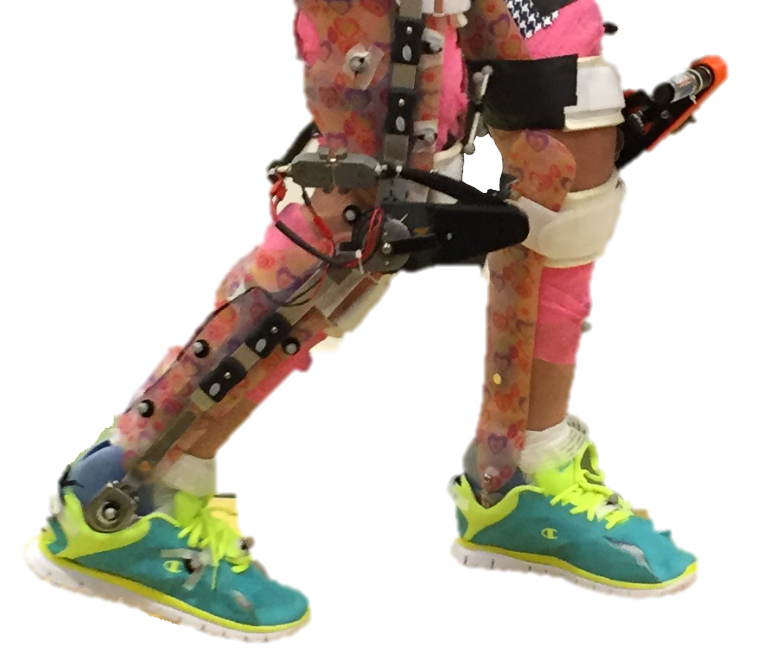By Kerry Bennett
Office of the Vice President for Research
According to the Centers for Disease Control and Prevention, cerebral palsy (CP)—caused by neurological damage before, during or after birth—is the most common movement disorder in children, limiting mobility and independence throughout their lives. An estimated 500,000 children in the U.S. have CP.
Although nearly 60 percent of children with the disorder can walk independently, many have crouch gait, a pathological walking pattern characterized by excessive knee bending, which can cause an abnormally high level of stress on the knee. Crouch gait can lead to knee pain and progressive loss of function and is often treated through invasive orthopedic surgery.
Assistant professor of mechanical engineering Zach Lerner, who joined Northern Arizona University’s Center for Bioengineering Innovation in 2017, recently published a study in the journal Science Translational Medicine investigating whether wearing a robotic exoskeleton—a leg brace powered by small motors—could alleviate crouch gait in children with cerebral palsy.
“We evaluated a novel exoskeleton for the treatment of crouch gait, one of the most debilitating pathologies in CP,” Lerner said. “In our exploratory, multi-week trial, we fitted seven participants between the ages of five and 19 with robotic exoskeletons designed to increase their ability to extend their knees at specific phases in the walking cycle.”
After being fitted with the assistive devices, the children participated in several practice sessions. At the end of the trial, six of the seven participants exhibited improvements in walking posture equivalent to outcomes reported from invasive orthopedic surgery. The researchers also demonstrated that improvements in crouch increased over the course of the exploratory trial, which was conducted at the National Institutes of Health Clinical Center in Bethesda, Maryland.
“Together, these results provide evidence supporting the use of wearable exoskeletons as a treatment strategy to improve walking in children with CP,” Lerner said.

The exoskeleton was safe and well-tolerated, and all the children were able to walk independently with the device. Rather than guiding the lower limbs, the exoskeleton dynamically changed their posture by introducing bursts of knee extension assistance during discrete portions of the walking cycle, which resulted in maintained or increased knee extensor muscle activity during exoskeleton use.
“Our results suggest powered knee exoskeletons should be investigated as an alternative to or in conjunction with existing treatments for crouch gait, including orthopedic surgery, muscle injections and physical therapy,” Lerner said.
Lerner leads NAU’s Biomechatronics Lab, where his goal is to improve mobility and function in individuals with neuromuscular and musculoskeletal disabilities through innovations in mechanical and biomedical engineering. Building on the encouraging results of this study, his team is working toward conducting longer-term exoskeleton interventions to take place at home and in the community.



